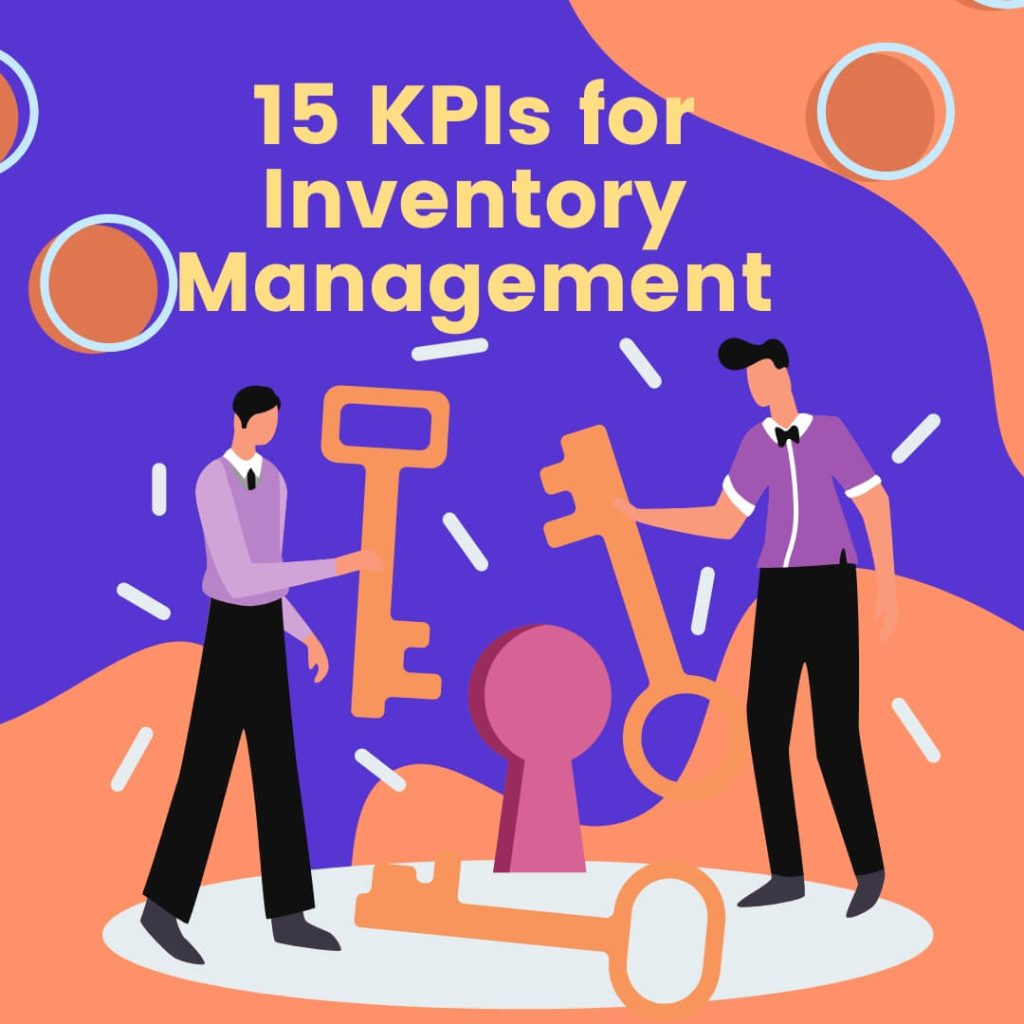Inventory management is an essential aspect of running a successful business. Proper inventory management can help businesses maintain optimal inventory levels, minimize stockouts, reduce carrying costs, and maximize profitability. However, it can be challenging to measure and track the effectiveness of inventory management. That’s where key performance indicators (KPIs) come in.
What Is a KPIs in Inventory Management?
A KPI, or key performance indicator, in inventory management, is a measurable value that helps businesses evaluate how effectively they are managing their inventory levels. KPIs provide a way for businesses to track and analyze inventory-related data, such as stock levels, sales, order fill rates, and lead times, and make informed decisions based on that data.
Effective inventory management is essential for businesses to maximize profits, minimize waste, and maintain customer satisfaction. KPIs help businesses monitor their inventory performance and identify areas where they can improve efficiency, reduce costs, and increase profitability.
Some common KPIs in inventory management include stock turnover ratio, cycle time, order fill rate, backorder rate, and days inventory outstanding (DIO). Businesses can use these KPIs to measure inventory-related data and evaluate their inventory management strategies. By setting goals and tracking progress against these KPIs, businesses can make data-driven decisions to optimize their inventory management processes and improve their bottom line.
In this blog post, we will discuss the 15 most important KPIs for inventory management, their formulas, and how to use them to improve your inventory management strategy.
Inventory Turnover
Inventory turnover is a crucial KPI for measuring the efficiency of inventory management. It measures how quickly a business sells through its inventory. The formula for inventory turnover is:
Inventory Turnover = COGS / Average Inventory
COGS refers to the cost of goods sold, and average inventory refers to the average value of inventory over a given period. A high inventory turnover indicates that the business is efficiently managing its inventory by stocking products that are in high demand and quickly selling out of low-demand products.
Stockout Rate
Stockout rate measures the percentage of time that a business runs out of stock of a particular product. The formula for stockout rate is:
Stockout Rate = (Number of Times Out of Stock / Total Number of Opportunities) x 100
A low stockout rate indicates that the business is managing its inventory levels well and keeping sufficient stock to meet customer demand.
Carrying Cost of Inventory
The carrying cost of inventory measures the cost of holding inventory over a period of time. It includes expenses such as storage, insurance, and depreciation. The formula for the carrying cost of inventory is:
Carrying Cost of Inventory = Average Inventory Value x Carrying Cost Percentage
A low carrying cost indicates that the business is managing its inventory efficiently and not tying up too much capital in unsold inventory.
Gross Margin Return on Investment (GMROI)
GMROI measures the profitability of the inventory investment. The formula for GMROI is:
GMROI = Gross Margin / Average Inventory Investment
Gross margin refers to the revenue generated from the sale of inventory minus the cost of goods sold. A high GMROI indicates that the business is generating a good return on its inventory investment.
Lead Time
Lead time measures the time it takes for a business to receive inventory after it has been ordered. A shorter lead time can help the business avoid stockouts and minimize the amount of inventory it needs to hold. The formula for lead time is:
Lead Time = Time of Receipt – Time of Order
This formula can be adjusted to reflect different variables that may impact lead time, such as production time, shipping time, and order processing time.
Order Fill Rate
Order fill rate measures the percentage of customer orders that are fulfilled in full and on time. The formula for the order fill rate is:
Order Fill Rate = (Number of Orders Filled in Full and On Time / Total Number of Orders) x 100
A high order fill rate indicates that the business is fulfilling customer orders accurately and on time, which can help build customer loyalty and satisfaction.
Cycle Time
Cycle time measures the time it takes to complete a cycle of inventory, from receiving the order to delivering the product to the customer. The formula for cycle time is:
Cycle Time = Total Manufacturing Lead Time + Total Delivery Lead Time
A shorter cycle time can help businesses reduce inventory holding costs, improve customer satisfaction, and increase sales.
Backorder Rate
Backorder rate measures the percentage of orders that cannot be fulfilled immediately due to insufficient stock. The formula for backorder rate is:
Backorder Rate = (Number of Backorders / Total Number of Orders) x 100
A low backorder rate indicates that the business is effectively managing its inventory levels and fulfilling customer orders in a timely manner.
Obsolete Inventory Ratio
Obsolete inventory ratio measures the percentage of inventory that has not sold within a specified time period and is considered obsolete. The formula for obsolete inventory ratio is:
Obsolete Inventory Ratio = Value of Obsolete Inventory / Total Inventory Value
A high obsolete inventory ratio can indicate that the business is stocking products that are no longer in demand or not selling, which can tie up capital and reduce profitability.
Perfect Order Rate
Perfect order rate measures the percentage of orders that are delivered to the customer without error, on time, and in full. The formula for perfect order rate is:
Perfect Order Rate = (Number of Perfect Orders / Total Number of Orders) x 100
A high perfect order rate indicates that the business is efficiently managing its inventory levels, fulfilling customer orders accurately and on time, and minimizing the risk of stockouts.
Capacity Utilization
Capacity utilization measures the percentage of a business’s production capacity that is being used to manufacture goods. The formula for capacity utilization is:
Capacity Utilization = (Actual Output / Maximum Possible Output) x 100
A high capacity utilization indicates that the business is efficiently using its production capacity and maximizing its profitability. However, a capacity utilization that is too high can lead to bottlenecks and reduced product quality, so businesses must strike a balance between maximizing capacity utilization and ensuring product quality.
Days Inventory Outstanding (DIO)
Days inventory outstanding measures the number of days it takes for inventory to be sold and replaced. The formula for DIO is:
DIO = (Average Inventory / COGS) x 365
A low DIO indicates that the business is efficiently managing its inventory and quickly selling products.
Stock Turnover Ratio
Stock turnover ratio measures the number of times inventory is sold and replaced in a given period. The formula for stock turnover ratio is:
Stock Turnover Ratio = COGS / Average Inventory
A high stock turnover ratio indicates that the business is efficiently managing its inventory and quickly selling products.
Average Age of Inventory
Average age of inventory measures the average amount of time that inventory is held before it is sold. The formula for an average age of inventory is:
Average Age of Inventory = (Total Inventory Value / COGS) x 365
A low average age of inventory indicates that the business is effectively managing its inventory and selling products in a timely manner.
Shrinkage Rate
Shrinkage rate measures the percentage of inventory that is lost, damaged, or stolen. The formula for shrinkage rate is:
Shrinkage Rate = (Value of Lost or Stolen Inventory / Total Inventory Value) x 100
A low shrinkage rate indicates that the business is effectively managing its inventory and minimizing the loss of inventory due to theft, damage, or other reasons.
Conclusion
Tracking these KPIs can help businesses gain a better understanding of their inventory management strategy’s effectiveness. By analyzing these KPIs, businesses can identify areas for improvement and make data-driven decisions to optimize their inventory levels, reduce stockouts, and maximize profitability. To effectively utilize KPIs for inventory management, businesses should ensure that they are regularly tracking and analyzing these metrics and adjusting their inventory management strategy accordingly.





